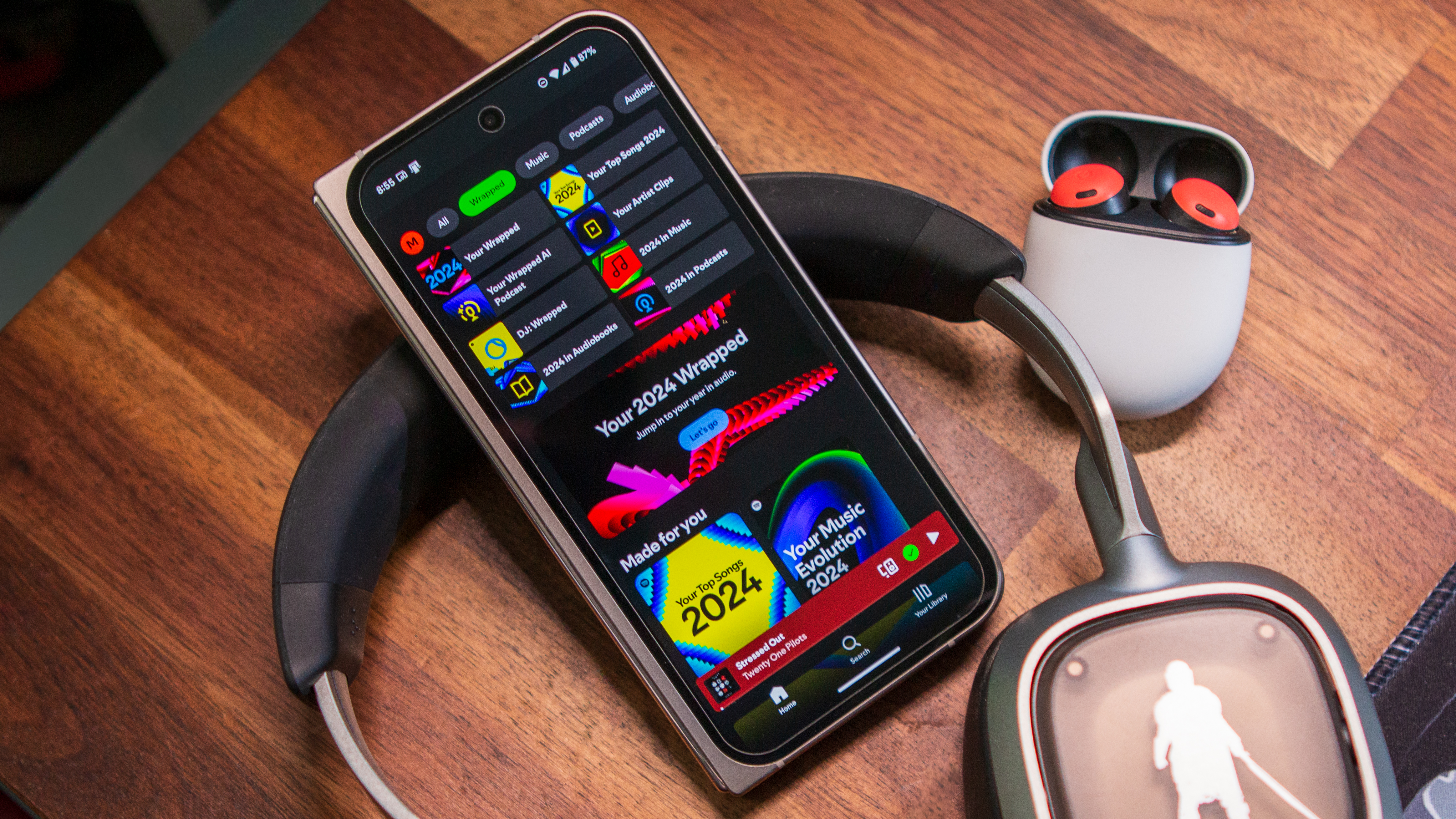Here's the thing about portable batteries. They tend to either be small with just a couple of options for connections, or they're huge with the ability to charge all the things.
The OmniCharge 20+ is a happy medium. It's not small — just under 5 inches square, and a little more than an inch thick. (If you're old enough, it's about like stacking three or four CD jewel cases on top of each other.) It's also not light — weighing in at just under a pound and a half.
But this battery has a few things going for it. First is the 20,000 mAh capacity. That's a lot of juice to charge a lot of things.
Second is number of options for charging things. It's got two USB-A ports that are compatible with Qualcomm Quick Charge 3.0. It's got a USB-C port that's good for Power Delivery output, as well as input. Repeat: It's a battery that you can charge via USB-C. And it has a three-pronged 120V AC outlet.
But, wait. There's more.
If you just hate plugging in your phone to charge it, there's a wireless charging coil buried in the top of the OmniCharge.
The Good
Get the latest news from Android Central, your trusted companion in the world of Android
- Good capacity in a compact size
- Every charging option you need
- Great design
The Bad
- Documentation isn't great
- Icons can be confusing
- Wireless charging can be finicky

Everything you need
OmniCharge 20+ All the ports
So let's recap:
- USB-A x2 with Qualcomm Quick Charge 3.0
- USB-C with Power Delivery output and input
- 120V outlet
- Wireless charging
- A barrel power connector for input or output (not included in my box, though)
That's just the business end of this battery. It's got more tricks of its sleeve.
Everything starts with the well-marked power button. (If you've ever had a battery whose power button was far from obvious, you'll appreciate this part.) Press it, and you're greeted with a small monochrome (it's OLED, believe it or not) that gives information about what's going on. That includes the rate and method of power coming in and going out of the battery, as well as the total remaining charge in the battery itself.
The power button also serves as a way into the battery's on-screen menu. Yes, this thing has options. Double-press the power button and you'll be able to change the following:
- DC out voltage
- "Wall socket" voltage
- USB default on/off
- Screen timeout
- Auto shutdown
- Temperature in Celsius or Fahrenheit
- Whether the button lights are on or off
- Model/firmware version
The icons on the screen are a little confusing — you're absolutely going to need to dive into the technical specs at first to get a handle on it. Same, too, goes for the two buttons to the right of the screen. This is also where you'll quickly discover that the documentation that comes in the box pretty lacking. And when you're talking about anything dealing with electricity and expensive devices, that's a bad thing.
What's it like to use? Well, it's a battery. And this one's a little more complicated than most in that you'll need to use the election buttons to determine whether you'll be charging via USB or the AC outlet. But after that you've got 20,000 mAh (or 72Wh) with which to juice things up. I've used it with phones. I've used it with laptops. I have used it on a train. I have used it on a plane. I have charged things here and there. I have charged things everywhere.
The wireless charging can be a little finicky, but that'll depend a little on what phone you're using and just a little practice to learn where things line up just right. I don't mind using cables when I'm using a portable battery, though. It's easier and I know it works. But it's still a cool option to have.





The details
OmniCharge 20+ Charging Specs
One last thing: the tech specs of the charging. This is taken from OmniCharge itself:
AC/HVDC Outlet
- Output: 120V, 60Hz, modified sine wave (230V, 50Hz, modified sine wave European version)
- HVDC Output: 150V (300V for European Version)
- Continuous Output Power: 100W
- Peak Output Power: 120W (3s)
- Maximum Output Surge Power: 130W (0.1s)
USB-C Port
- Input: USB-PD, 5V – 9V – 12V – 15V – 20V, up to 3A, 40W max
- Output: USB-PD, 5V – 9V – 12V – 15V – 20V, up to 3A, 60W max
USB-A Output
- Port1 and Port2: QC 3.0 compatible 18W Max
5.5 x 2.1mm Barrel Port
- Input: 4.5V – 36V, up to 3A (2W – 45W)
- Output: Adjustable 5V – 25V with 0.1 Accuracy, up to 5A (100W max)
Wireless Charging
- Output: 10W max
The bottom line
Should you buy it? Sure
All in all? This is one hell of portable battery. It may even be more than what I need to keep in my gear bag on a daily basis. On the other hand if it is in my gear back, I know I'm going to be able to power pretty much any electronic device someone can beg me to power.
4.5 out of 5
But it definitely deserves a big ding for the inadequate documentation. That's perhaps a bigger strike on the company than it is the battery itself. But on the other hand the battery itself is somewhat complicated, and it definitely needs a better manual.
Get through that, though, and you're going to look down on every other battery you see.



